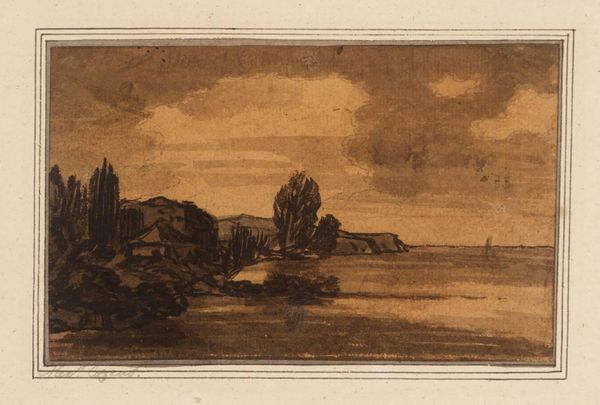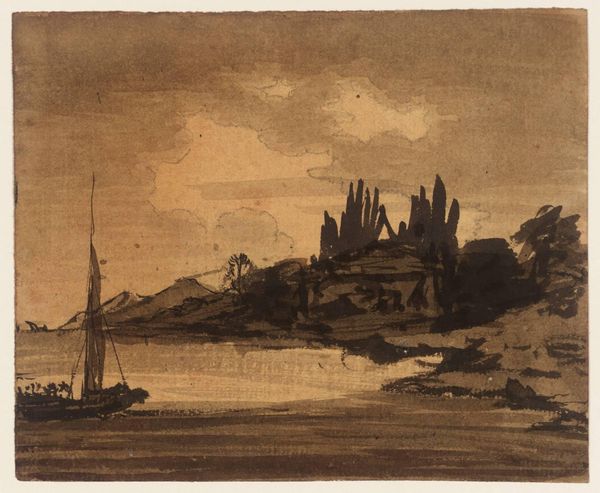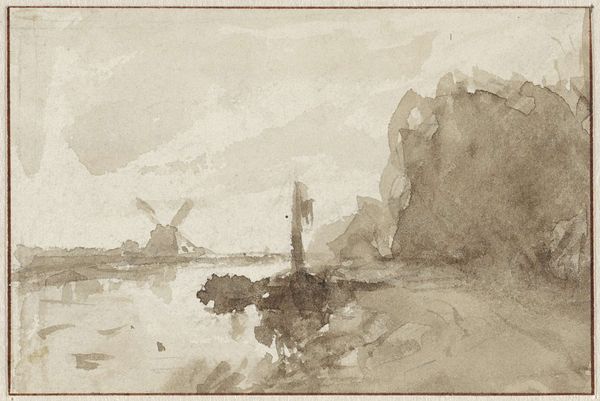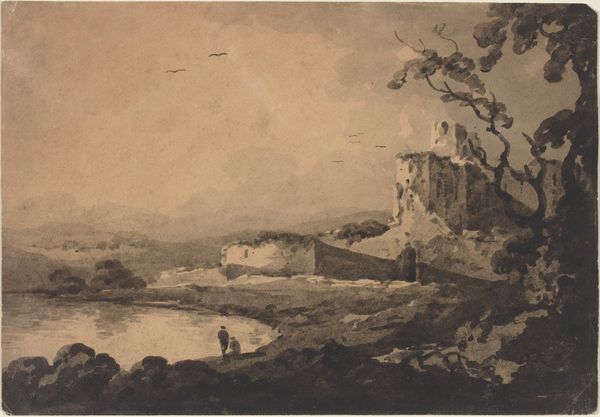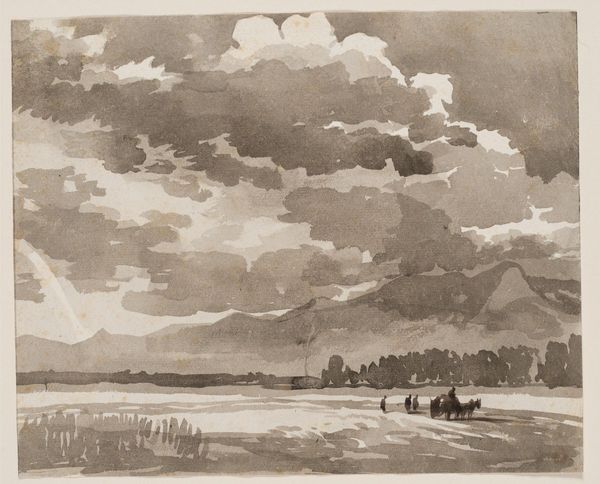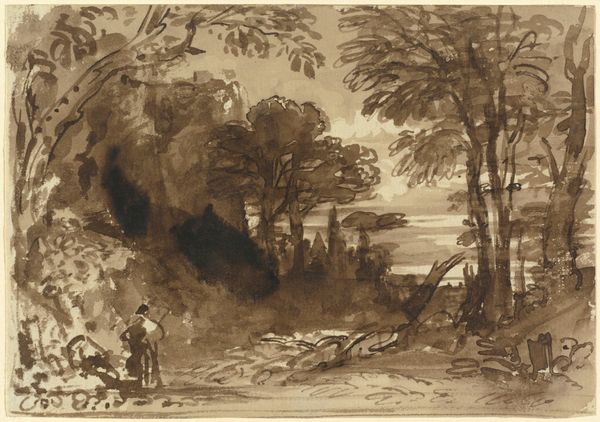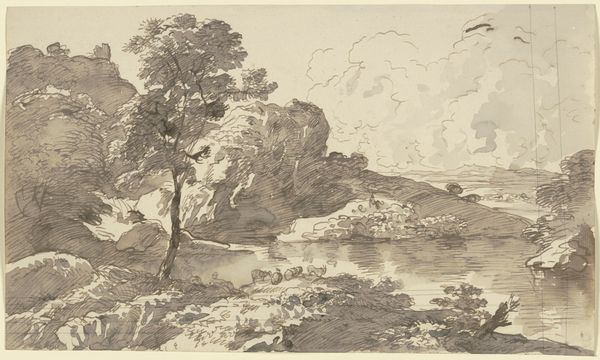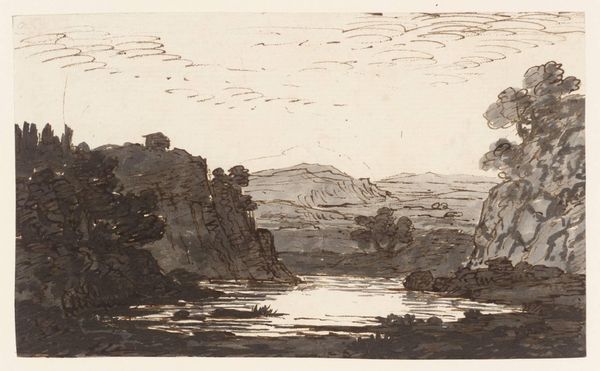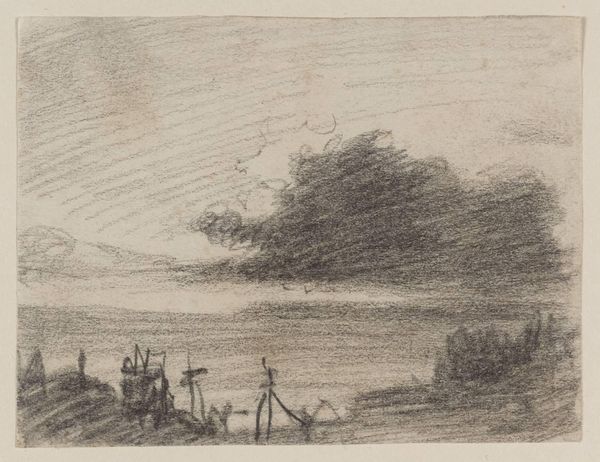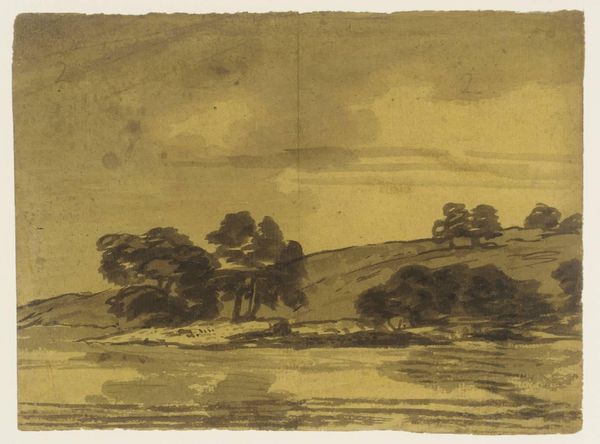
Dimensions: height 143 mm, width 215 mm
Copyright: Rijks Museum: Open Domain
Curator: This watercolor on paper, titled "Rivierlandschap," meaning "River Landscape," comes to us from Willem de Famars Testas. Painted sometime between 1844 and 1896, it captures a serene riverside scene in monochromatic hues. Editor: My immediate feeling is one of tranquility tinged with melancholy. The muted palette creates a sense of quiet reflection. Curator: The almost sepia tones evoke a sense of nostalgia. The landscape motif itself is potent with cultural symbolism; think of the river as a symbol of time, change, and the ever-flowing current of life. The small dwelling suggests refuge and simple existence. Editor: And look at its placement. That little cottage nestles into the earth, a contrast to the implied industrialization—represented by the windmill across the water—eating away at the natural world. Water itself, though often symbolic of purification and life, is here heavy and still. The few figures on the bank seem almost swallowed by the land itself. Curator: It is a scene in balance: humans within nature, technology within pastoral life, and change within tradition. This painting reflects a period of shifting values and anxieties surrounding modernity. There is something universal about that symbolism that still resonates today. The flock of birds is also noteworthy as messengers soaring off to unknown locations, symbolizing human dreams or destinies. Editor: Absolutely, and seeing that period from the perspective of, say, a woman living in that little cottage? She would have occupied such a different space from that of the landowners or industrialists. This painting hints at so many intersectional layers that define landscape far beyond what we see at first glance. What can the shadows and light that dance upon this scene symbolize for each person viewing it? Curator: Such powerful symbolism in something so subtly rendered. It underscores the capacity of even the quietest image to convey profound emotional and historical weight. Editor: It’s these nuances—of time, place, and identity—that continue to give art its political charge, connecting it to a narrative bigger than itself.
Comments
No comments
Be the first to comment and join the conversation on the ultimate creative platform.
